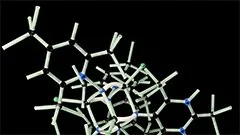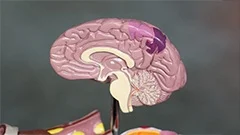Introduction
Protein biochemistry is a crucial aspect of molecular biology that focuses on the chemical behavior, synthesis, structure, and function of proteins within a cellular context. This comprehensive study serves as an essential foundation for understanding various biological processes at a molecular level. In this course, we will delve into the intricate world of protein biochemistry, exploring its significance, fundamental concepts, mechanisms, and applications.
Historical Background
The discovery of proteins dates back to ancient civilizations, but it was not until the 19th century that scientists began to understand their role in biological systems. The pioneering works of chemists like Jöns Jacob Berzelius and Justus von Liebig laid the groundwork for protein chemistry. In the early 20th century, advances in technology enabled researchers to isolate and characterize individual proteins, leading to a more comprehensive understanding of their structures, functions, and interactions.
Protein Structure and Function
Primary Structure
Primary structure refers to the linear sequence of amino acids that comprise a protein molecule. This sequence is determined by the genetic code encoded in DNA and translated by ribosomes during protein synthesis. The primary structure dictates the overall shape and functionality of the protein, as it allows for specific interactions between proteins and other molecules within the cell.
Secondary Structure
Secondary structures are repetitive patterns that form within a protein's primary sequence to stabilize its conformation. These structures include alpha-helices, beta-sheets, and turns. Alpha-helices consist of an extended polypeptide chain coiled in a right-handed helix, while beta-sheets are composed of extended strands connected by hydrogen bonds between adjacent amino acid residues. Turns are short segments of the protein chain that fold back on themselves to form a sharp bend.
Tertiary Structure
Tertiary structure describes the overall shape of a protein, which is determined by interactions between its side chains and backbone. These intramolecular forces result in the formation of domains, loops, and other structural features that give proteins their unique 3D configurations. The tertiary structure allows for proper folding and function of proteins within the cell.
Quaternary Structure
Quaternary structure refers to the arrangement of multiple protein subunits into a single multimeric complex. These complexes are essential for many biological processes, such as enzyme catalysis, ion transport, and signal transduction. The interaction between subunits is mediated by non-covalent forces like hydrogen bonds, electrostatic interactions, and van der Waals forces.
Enzymes: Proteins with Catalytic Activity
Enzymes are proteins that catalyze biochemical reactions within cells. They play a vital role in metabolism by increasing the rate of chemical reactions without being consumed themselves. Enzymes function through active sites, which bind to substrates and facilitate the transformation of one or more reactants into products. The activity of enzymes is regulated by various mechanisms, including allosteric regulation, feedback inhibition, and covalent modification.
Protein Biosynthesis and Degradation
Proteins are synthesized on ribosomes using information from the genetic code encoded in DNA. This process begins with transcription, where the gene encoding the protein is transcribed into mRNA. The mRNA then leaves the nucleus and binds to a ribosome, where protein synthesis occurs through a series of steps known as translation. Once synthesized, proteins may undergo post-translational modifications, such as glycosylation, phosphorylation, or cleavage, that affect their stability, solubility, and function.
Protein degradation is the process by which cells remove damaged or unnecessary proteins. This is essential for maintaining cellular homeostasis and preventing the accumulation of misfolded or aggregated proteins associated with various diseases, such as Alzheimer's and Parkinson's. Protein degradation occurs through two main pathways: the ubiquitin-proteasome system and autophagy.
Conclusion
Protein biochemistry offers a fascinating insight into the intricate world of molecular biology, providing essential knowledge for understanding various biological processes at a molecular level. In this course, we have explored the fundamental concepts of protein structure, function, synthesis, and degradation, as well as the role of enzymes in cellular metabolism. With further study, students will be able to apply this foundational knowledge to advanced topics in protein biochemistry and related fields.
MCQ: Test your knowledge!
Do you think you know everything about this course? Don't fall into the traps, train with MCQs! eBiologie has hundreds of questions to help you master this subject.
These courses might interest you
Create a free account to receive courses, MCQs, and advice to succeed in your studies!
eBiologie offers several eBooks containing MCQ series (5 booklets available free for each subscriber).




